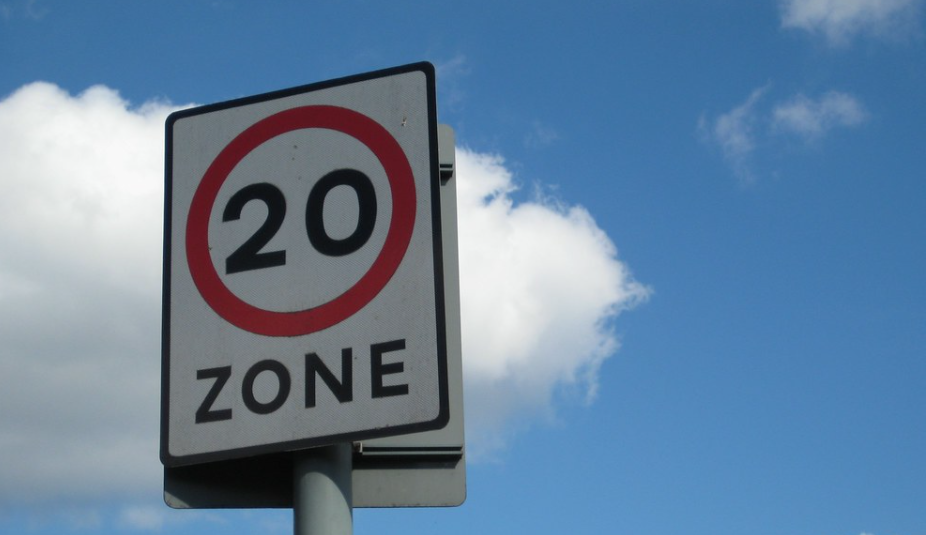Harrow has recorded the steepest decline of any borough in this year’s Healthy Streets Scorecard, dropping from 26th to 28th place overall.
The borough’s score fell from 2.67 in 2024 to just 2.20 in the latest results. Among Outer London boroughs, Harrow now ranks 14th out of 19. The drop is attributed to a lack of progress across almost every metric used to assess the health, safety and sustainability of London’s streets.
This year’s data shows a drop in sustainable travel with combined sustainable modeshare falling from 61.4% to 58.8%. The percentage of adults walking five times per week decreased from 33.0% to 29.2%, while cycling once a week saw no improvement, remaining at 4.7%. Car ownership in the borough remains far above the London average, with 1.02 cars per household. At the same time, the number of households without a car has decreased, from 32.7% to 30.3%.
The data also reveals that 20mph speed limits have now been recorded on just 28% of borough-managed roads – a drop from last year’s reported 36.8%. However, this decrease reflects a correction in the data rather than any actual removal of 20mph zones.
There has been no change in Low Traffic Neighbourhood coverage, which remains at 12.5%. Protected cycle track provision remains extremely limited, at just 1.8% of borough roads. Controlled Parking Zone coverage dropped very slightly, from 27.0% to 26.9%, though this is attributed to an increase in the number of roads eligible for CPZs rather than a cut in existing zones.
There was some improvement in electric vehicle adoption, with the proportion of polluting vehicles falling slightly from 6.52% to 6.35%.
One of the few areas where Harrow improved was its Travel for Life school engagement programme. Participation rose from 16.4% to 27.3%. Despite this, the borough still lags behind when it comes to School Streets, with just 4.2% of schools involved – one of the lowest levels in London.
The Healthy Streets Scorecard Coalition, which publishes the annual rankings, said more could be done. “To improve its score and ranking, Harrow could look to deliver some easy wins, like more controlled parking and extended 20mph limits. This could be delivered alongside School Streets rollout, which may be facilitated by the impetus built around Travel for Life. Bus priority investment, cycle infrastructure and supporting car clubs to cut car ownership would further help move Harrow toward healthier, safer streets.”
Across the capital, several boroughs made significant gains. Newham rose five places and was awarded “Most Improved Borough,” while Ealing increased both its School Street and 20mph coverage and climbed to become the second-highest ranked Outer London borough. The City of London took the overall top spot, with Islington and Waltham Forest winning best Inner and Outer boroughs respectively.
By contrast, boroughs like Tower Hamlets, Lewisham, Bexley and Hillingdon were singled out for stagnation or decline. A spokesperson for the coalition said: “Congratulations and thanks to our winners, but we really need all councils pulling their weight, urgently. The boroughs have dedicated Local Implementation Plan funding and need to move fast to deliver if any of the Mayor’s ‘healthy streets’ targets for London are to be met. Now is the time for boroughs at bottom of table to start acting more like Newham and the scorecard leaders, to show their declarations of action on road danger, climate, health and air pollution are in any way meaningful. We really hope to see much stronger action from all boroughs in the coming year.”
Now in its seventh year, the Healthy Streets Scorecard combines ten indicators to assess each borough’s efforts to create safer, greener and more active streets. While some boroughs are pressing forward with low-traffic neighbourhoods, School Streets and protected cycleways, the latest results show that Harrow remains firmly stuck in reverse.
📩

Get the latest breaking news, roadworks, crime updates and local events straight to your inbox – totally free, every day.
SIGN UP below
